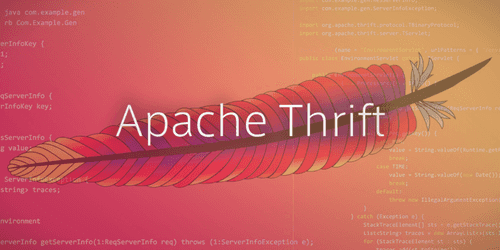JavaScript Object Notation (JSON)
JSON is a standard format used to represent data as a structured object. Its major usage is to send data in websites through the http interactions and RESTful API. It is supported by all the major languages and is native to JavaScript. JSON is also used in configuration files, and is a powerful tool for database systems.
The format accepts 6 data types:
- Booleans
- Numbers
- Strings
- "null" value
- Key-value objects (pairs)
- Arrays
To declare a JSON object, we open curly brackets. To indicate that we are using an array, we use square brackets.
Example:
{
"Company":"Adaltas",
"Tags":"JSON",
"Comments":["Interesting.", "I would like to check it out", "Nice tag description"]
}
- Related tags
- REST
Related articles

Apache Thrift vs REST
Categories: DevOps & SRE, Open Source Summit Europe 2017 | Tags: Thrift, gRPC, HTTP, JavaScript Object Notation (JSON), REST
Adaltas recently attended the Open Source Summit Europe 2017 in Prague. I had the opportunity to follow a presentation made by Randy Abernethy and Jens Geyer of RM-X, a cloud native consulting company…
Oct 28, 2017

Main advantages of GraphQL as an alternative to REST
Categories: Front End | Tags: gRPC, API, GraphQL, JavaScript Object Notation (JSON), Node.js, Registry, REST
GraphQL is based on a simple idea, moving the assembly of a request from the server to the client. The client sees the overall strongly-typed schema instead of multiple REST endpoints and he builds…
By David WORMS
Nov 27, 2018

Comparison of different file formats in Big Data
Categories: Big Data, Data Engineering | Tags: Business intelligence, Data structures, Avro, HDFS, ORC, Parquet, Batch processing, Big Data, CSV, JavaScript Object Notation (JSON), Kubernetes, Protocol Buffers
In data processing, there are different types of files formats to store your data sets. Each format has its own pros and cons depending upon the use cases and exists to serve one or several purposes…
By Aida NGOM
Jul 23, 2020

OAuth2 and OpenID Connect for microservices and public applications (Part 2)
Categories: Containers Orchestration, Cyber Security | Tags: LDAP, Micro Services, CNCF, JavaScript Object Notation (JSON), OAuth2, OpenID Connect
Using OAuth2 and OpenID Connect, it is important to understand how the authorization flow is taking place, who shall call the Authorization Server, how to store the tokens. Moreover, microservices and…
By David WORMS
Nov 20, 2020

Storage size and generation time in popular file formats
Categories: Data Engineering, Data Science | Tags: Avro, HDFS, Hive, ORC, Parquet, Big Data, Data Lake, File Format, JavaScript Object Notation (JSON)
Choosing an appropriate file format is essential, whether your data transits on the wire or is stored at rest. Each file format comes with its own advantages and disadvantages. We covered them in a…
Mar 22, 2021